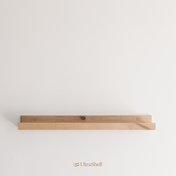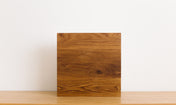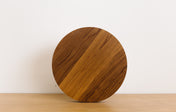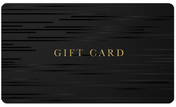I’ve spent a lot of my time thinking about creativity in the past few years. The act and art of bringing something into existence — the patient practice of growing an idea. There are, of course, innumerable facets of creativity and because of the breadth of scope, sometimes I think we get lost in the idea of what it means to be creative and we forget to actually be creative.
If you were to look up a list of creative activities online, most lists would consist of a few dozen art or music-inspired activities for you to participate in. And while, yes, the arts have no shortage of creativity, we limit ourselves and our potential when we think that creativity ends there.
It’s so easy to look at someone painting and think, wow, they are so creative. But is it as easy for you to think that same thing when you see someone engaged in a STEM activity? Probably not. But creativity, in its truest form, exists as much at a science fair as it does at an art show.
And I think when we can let go of the limits we impose on the idea of a “right” way to create or of a “correct” way to present ourselves to the world as a creative person, and we couple that freedom with grace and self-compassion, we give ourselves the chance to grow and create in ways we may never have expected.
I feel a little cheesy typing that out right now, but it’s what I genuinely believe.
I also happen to believe that we all possess some inherent level of creativity. To me, humanity and the desire to create go hand in hand. I also believe that we can learn ways to grow that natural creativity — I’m opposed to the idea that we can’t expand our creative potential.
The following is a list of ways I've found throughout the last few years, through a fair amount of trial and error, that have helped me expand my potential to create and foster a sense of self-compassion and patience along the way. This list is by no means exhaustive, and not every idea will resonate with you.
That’s okay.
Take what you want, what works for you, and simply leave what doesn’t.

The Art of Being Really Bad at Something
I started painting on a whim with some friends about a year ago. We found a local watercolor class that was only $15 a lesson and thought, why not. At first, it was a good way to connect with friends and spend a little time doing something with my hands, far away from a computer screen.
And I found that I really enjoyed painting and simultaneously, that I was really bad at it.
While the concept of blending colors and creating a custom palette was second nature, my ability to sketch out the painting was far from adequate which meant that I walked away from most classes with a picture that looked like a random assortment of pretty colors, nothing recognizable.
By the third or fourth class, I should have quit because it was clear to me, and the instructor, that my natural talents were elsewhere. But instead of stopping I went and bought a set of watercolors for my house and started painting two or three times a week in between classes.
Me, my nice brushes, a few puddles of watercolor, and a stack of overpriced paper sat down together regularly, and instead of focusing on being good at watercolor, I focused on enjoying the process of painting.
Now, repeatedly participating in something that I’m bad at is something I am very uncomfortable with. It’s not a skill I have perfected — sitting with my imperfections and shortcomings willingly. But allowing myself to be bad, find joy, and then choosing to keep going was liberating.
Why did I feel like I had to be good at something to enjoy it? And doing the uncomfortable work to answer that question brought a sense of contentment to painting and to my creative process as a whole.
It’s humbling, to be bad at something you really want to be good at. And it’s liberating to accept your natural gifts and their limits and create anyway.
I give this uncomfortable exercise five stars.

Super Scheduled
I have for a very long time, believed that creativity was found and fostered in moments when your life wasn’t scheduled. When you were free to pick and choose how to spend your time— when there were no constraints or guidelines.
I no longer believe this to be the only way that creativity grows. In fact, I believe this method of unscheduled living limits my personal creativity.
To me, at least, the idea is both counterintuitive and true: I am more creative when I have a set schedule in my life. I no longer sit down to create something and have a list of thirty thousand things I should be doing with my time running through my head. Those tasks have a set time, and so does this: the creating.
Sometimes I schedule in creativity. I give myself time to read good books or try my hand at making pasta or sewing something. And sometimes creativity sparks while I clean toilets, and in those instances, I leave myself a voice memo on my phone and carry on with the task if the idea I’m chasing can wait a little bit (sometimes it can’t wait and that’s okay too).
Since the first time I felt the validation of someone besides my parents identifying me as a creative person I have leaned, at one time or another, into every trope that comes with the territory, but that hasn’t always worked well for me. There will always be room for creative growth and exploration within the bounds of structure.
For me, the structure gives me support and peace of mind, it gives order to the chaos that so quickly envelops my world when I let it. The structure is what allows my mind to unburden itself just a little, and gives me room to fully create. I aim to be intentional and present, structure allows me to be intentional and present as I chase every creative endeavor I love.
Being a person who creates because it fills you up gets to be done on your terms, in a way that works for you. Even if you’re resistant to the idea of adding more routine, structure, and schedule to your life I encourage you to give it a try. You may be surprised by what the balance brings to your life.

Phone a Friend
My first big-girl job out of college was a bust. I was working as a copywriter for a company that, to put it frankly, made me miserable. And it wasn’t just me, all of my coworkers were pretty miserable too. We have, on many occasions after all jumping ship, talked about those darker days with a good amount of distaste, but a little awe as well. We fared much better than we should have, but several of us ended up in therapy — so, that helped.
This anecdote wouldn't make much sense here if I didn’t follow it up with this: there was one thing I loved about my job: my coworkers.
As a copywriter, I was part of a small, scrappy marketing team comprised completely of females. In my short year at the company, we saw three of four marketing managers roll in with big ideas and quickly roll out for one reason or another, but for most of my time there our little team stayed the same.
It was from these other creatives, each an expert in their own right or field, that I learned so much about creativity and the art of creating. My coworkers were unfailingly generous with their knowledge, freely sharing the ins and outs of their creative fields. We would share stories and tips and books. We would meet outside of work and talk about publishing a Zine together one day.
Each person had a different creative process that worked for them and their job, and I got a front-row seat. I learned how to create a great atmosphere on set during a modeled photoshoot. I learned about fonts and color theory. I learned how to create a collection that meant something, that shared a message. I experienced makeup and clothing as a creative form of self-expression. These were invaluable lessons shared by generous friends that all went on to shape many of my creative preferences and habits going forward.
I hated that job. I say it now for the first time on the immortal internet but I *hated* it. But I learned to never underestimate the value of surrounding yourself with people who are passionate about what they do, each a creative in their own right. Their excitement will inspire you. Their skills will support yours.
Even after leaving that job, I am still inspired when watching this same group of people go on and create. We keep in touch a little, we all live in different states now, but even watching from afar brings more benefit than I would have guessed.
You don’t have to cry in your office once a week with a group of creators to get this same experience. In fact, I wouldn’t necessarily recommend taking my path to this conclusion.
I would, however, recommend finding yourself some creative friends. Friends who are willing to tell you where to buy the best paper or how to work with weird light at a photo shoot. Or even just a friend who is willing to dive in and explore a new creative endeavor with you.
Don’t do all of your creating alone. It impedes growth. It makes everything stale.

Journal Entry
Journaling has always been something I love, there’s something cathartic and restorative about putting it all down on paper and walking away. I have discovered that the more consistent I am with journaling, the more creative I am in the present (and the more source material I have for the future).
A few years ago I was working on a Zine all about taking hurtful things that people had said and reclaiming those moments. Revisiting old journals gave me a place to go to explore some of those painful moments in my own timeline and gave me not only the material, but also reminded me how I felt in those moments.
This is obviously a very specific example, but it illustrates the point. You can be a great resource for your own creative materials and ideas. I wasn’t ready to create something out of those difficult moments when they happened, but with a few years in between me and the incident, I was able to use my own experiences as source material. The project then felt personal to me. The creative process had a real impact on my own life.
If keeping a traditional journal isn’t really your thing, try an art journal or a bullet journal. You can give video journaling a try or daily list-making. Keeping a record of your life in some way validates your daily experiences, lends itself to current and future creative endeavors, and helps you engender self-compassion and patience along the way.
You don’t need to be a great writer. You don’t need fancy paper and pens (though that seems to help me want to write). You don’t need anything but ten minutes and a handful of experiences collected throughout your day or week.
In your journal, aside from the normal kind of journaling stuff, I also submit that you take on a little bit of creative cartography. Create a map, or even just a list, of places where you can go and be creative, places that inspire your creativity, and places of calm and rest that you can go when you need a little restoration.
Creative spaces are critical. Keeping a list in your journal will give you ten places you can go on any given day when you feel stuck. When you need a reset. When you seek inspiration.
My list includes ten places within an hour of me, and a dozen places I may only stumble into once in my life. But I like that there’s an element of aspiration to my list, it keeps me moving forward. Which is kind of the point of everything on this list: to keep our feet moving in the right direction.
Know that we are cheering you on as you tackle your creative journey this year.
Best,
Maddison









